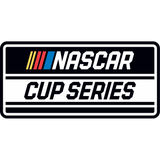
Taking a closer look inside NASCAR's concussion protocol
After it was announced that Dale Earnhardt Jr. will miss this weekend's NASCAR Sprint Cup Series race at New Hampshire Motor Speedway due to concussion-like symptoms, NASCAR took the time to explain how their concussion protocol is handled.
On Friday at New Hampshire, David Higdon, Vice President of NASCAR Integrated Marketing Communications, opened the Hendrick Motorsports news conference by laying out details of the process Earnhardt Jr. is going through.
"NASCAR requires drivers to submit a baseline neurocognitive assessment such as an impact test. And again this are only one tool as a prerequisite for being licensed to compete," said Higdon. "This mandate followed a comprehensive industry-wide education process launched by NASCAR in 2013.
"Additionally, NASCAR's medical advisory group, a team of consulting physicians who work directly with the league on policy development, while regularly meeting with drivers to continue the education process, includes many leaders in the neurological field such as Dr. Vinay Deshmukh of the Carolina Neurosurgery & Spine Associates."
Earnhardt Jr.'s career has been plagued with multiple concussion-related incidents, including in October of 2012 during the Chase for the Sprint Cup, where he was forced to sit out back-to-back races after being diagnosed with a concussion following a wreck at Talladega Superspeedway.
Higdon applauded Earnhardt Jr. for making the right decision regarding his health, especially while in the midst of trying to make this year's Chase for the Sprint Cup with eight races remaining before the cutoff.
"Another important element worth noting in the process is the active role our drivers and teams take in monitoring their health. Drivers approach this responsibility very seriously, and that ultimately benefits their entire team, the sport, and their fellow competitors," Higdon added. "We applaud Dale Earnhardt Jr. for being a great example, dating back to 2012, where he chose not to race in Charlotte and in Kansas during the Chase; and (he) has made that decision this weekend, as well."
Doug Duchardt, general manager of Hendrick Motorsports, explained just how closely Earnhardt Jr. monitored his health throughout the week leading up to the decision to sit out and place Alex Bowman in the car for Sunday's race at New Hampshire.
"On Tuesday morning, he (Dale) notified Greg (Ives) and me before our competition meeting, that he still wasn't feeling real well," said Duchardt. "He had gone to the doctor to try to understand what he had going on. Again, he thought he had some sort of sinus infection.
"Dale then went and saw a team of neurologists; and in the past two days has been going through some tests," Duchardt added. "[Thursday] around noon is when I found out that Dale could not be in the car for this weekend based on their suggestion. And of course as Rick (Hendrick) said, we 100 percent support that; and as Dave (Higdon) said we're proud of him making that decision."
Duchardt also said their main concern is that Earnhardt Jr. is 100 percent before he climbs back into the car -- no matter how much time it takes.
"The most important thing in this whole process is for Dale to get better and feel better, and we're going to let that happen on the timeline it's going to happen on."
One of the issues regarding Junior's incidents at Daytona International Speedway and Michigan International Speedway is the fact that he drove his car back to the garage area following both crashes.
It is standard NASCAR procedure that if a driver is unable to bring his or her car back to pit road or the garage following an accident, a trip to the infield care center for precautionary evaluation is mandatory.
But there is no protocol in place for drivers to be checked out if they are able to drive their damaged race cars back behind the wall.
That ultimately raises the question: Should NASCAR mandate a visit to the infield care center following a crash, regardless off whether or not they are able to drive their cars back to the garage? Or should drivers involved in crashes perhaps be required to get checked out by qualified physicians within a day or two of being involved in an incident, even after they return home?
It's an issue that likely will be addressed moving forward, as NASCAR's most popular driver sits on the sidelines with no definitive timetable for his return.






